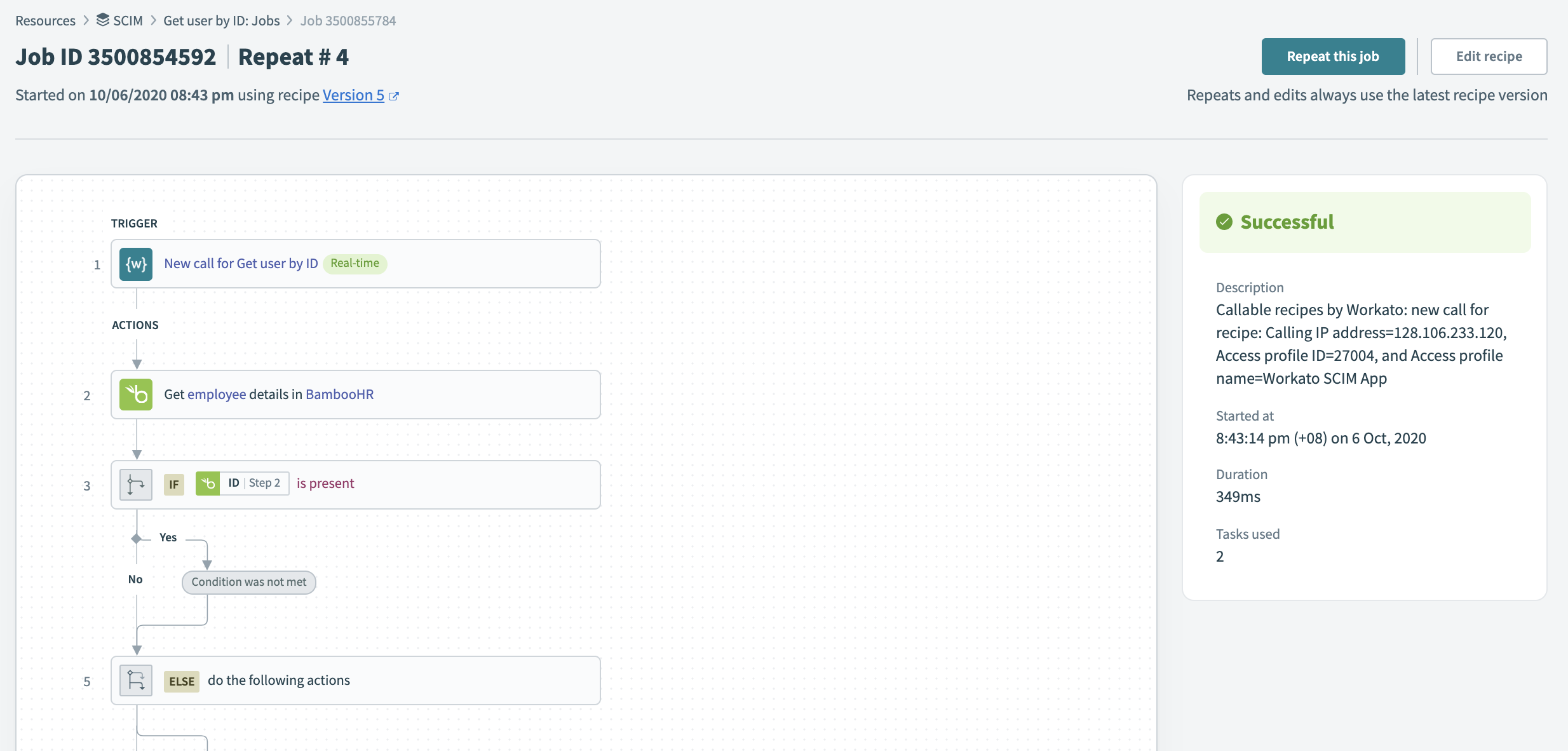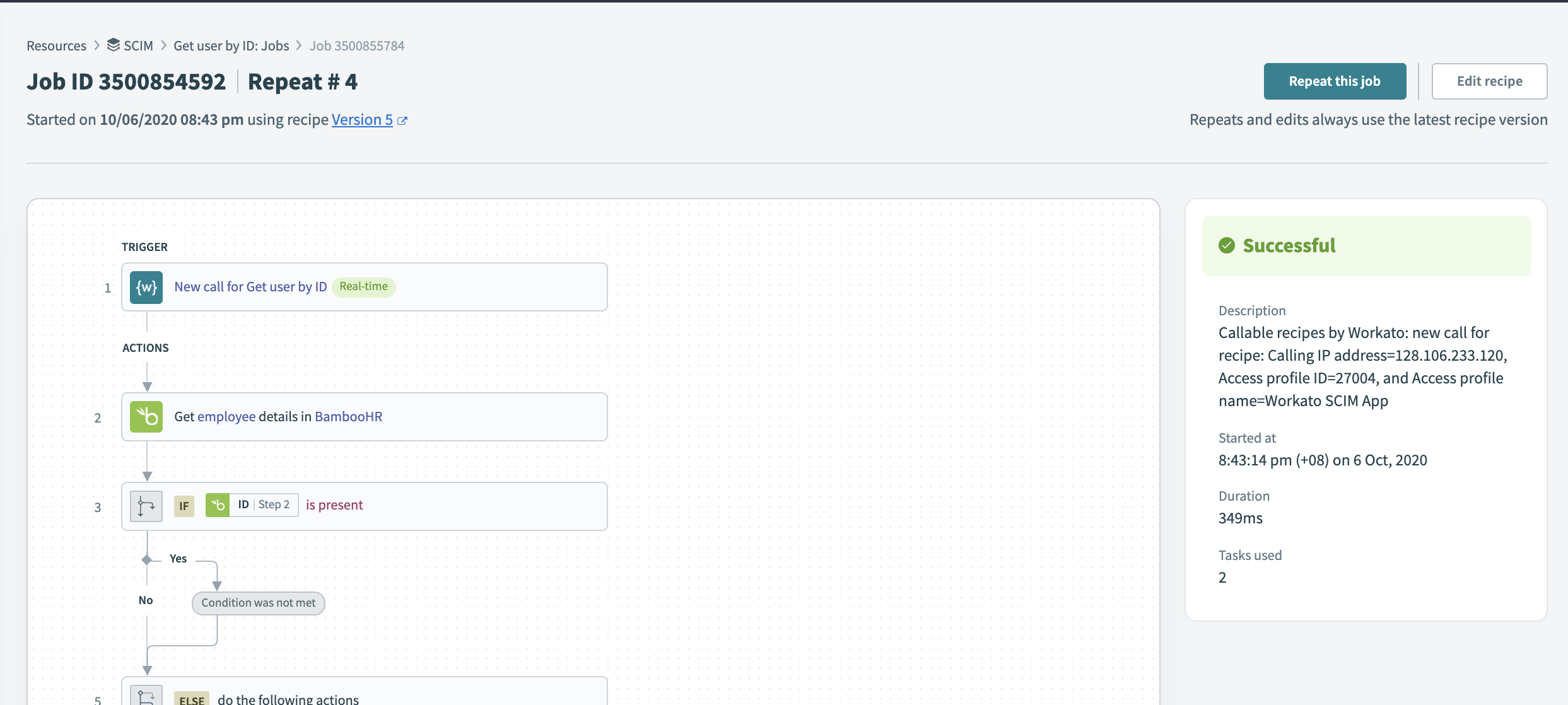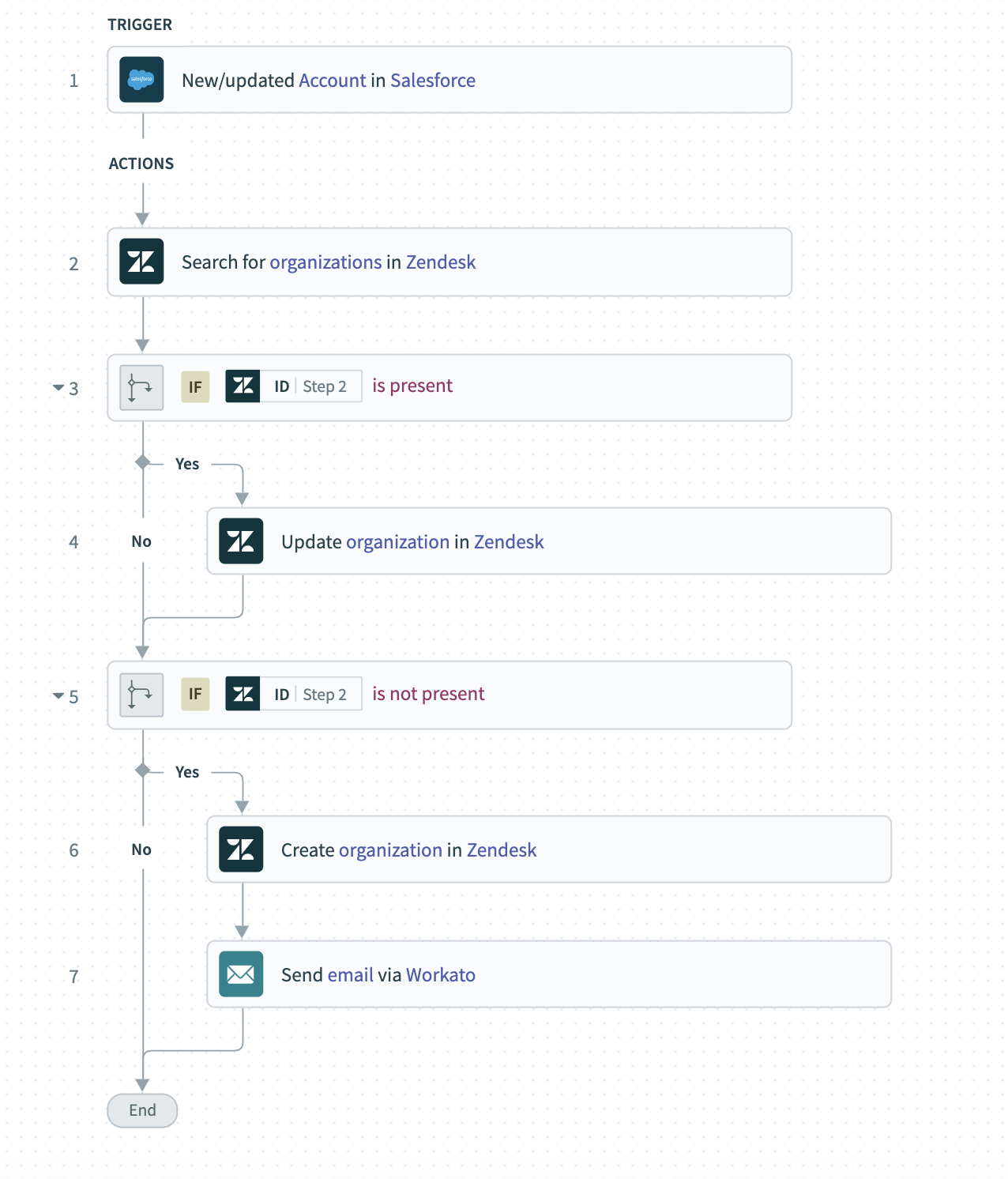# Rerunning jobs
Workato allows for jobs to be rerun. In such cases, the trigger event will run through the sequence of actions in the recipe again. This feature is useful when:
- You've edited the recipe and want to test it
- An error occurred in a job, you've fixed the recipe/data and wish to rerun the job
Note: When jobs are rerun, the trigger event is ran through the entire recipe. Duplication may occur, so be sure to check and remove duplicates (if present) before re-running the job.
To rerun jobs from the jobs report page, check the jobs to rerun and select Repeat.
 Rerunning jobs from jobs report page
Rerunning jobs from jobs report page
You can also rerun jobs from the job details page. Simply select Repeat job.
 Job rerun from job details page
Job rerun from job details page
Job reruns are in-place - meaning that the position of the job will not change within the jobs report. A job which was first processed in August and reran in September will retain its position among the other jobs processed in August.
# Cached trigger data in job reruns
All job reruns use cached data. This means that the original trigger event's data is reused for the rerun, and any changes made to the trigger event in the trigger app will not be picked up by a job rerun. This means that there are scenarios whereby a job rerun will not resolve your issues:
# When the failed job is due to data issues in the trigger
The recipe will return a failed job if it is processing the same faulty data from the trigger app, regardless of the number of reruns.
# When you update the trigger event and wish to see how the recipe processes the new trigger event
If you are using a New object trigger, you would have to delete the existing trigger event, for example, if you are using the New Salesforce account trigger, you would have to delete that Salesforce account and recreate a new Salesforce account for the recipe to pick up the Salesforce account (trigger event) with the new data.
If you are using a New/updated object trigger, you wouldn't have to delete the record with the old data, but simply update the record and let the recipe pick up the update, for example, if you are using the New/updated Salesforce account trigger, you can update the newly created/updated Salesforce account, and the recipe will pick up the change.
For both cases above, a new job will be picked up. Updating an event in your trigger app will not affect the cached data stored in the previous job, and a new job will be picked up.
# Job rerun history
Within the job details page, you can view the rerun history of the job.
 Jobs history
Jobs history
In the job details screen, if you're viewing a job rerun which is not the latest version of the job reran, the Rerun button will be grayed out.
# Common scenarios for rerunning jobs
- Testing a new recipe
When testing your recipe after building or after editing, it's a good idea to test all scenarios. If your recipe has conditional actions, it is best practice to test out all logical branches in the recipe.
For example, in the following recipe, a trigger event carries out either steps 2-3, or steps 4-5. In this case, we should test out the recipe flow for a Salesforce account which has no matching Zendesk organization, as well as a Salesforce account which has a matching Zendesk organization.
 *Recipe with two logical branches. Example recipe (opens new window) *
*Recipe with two logical branches. Example recipe (opens new window) *
Because the trigger is New/updated Salesforce account, we can simply create a new Salesforce account and let the recipe pick it up and process it through steps 4-5 to create a corresponding Zendesk account. After that, we can make a quick edit to the Salesforce account for the recipe to pick up the updated record, in which case it will run this Salesforce account through steps 2-3 as it will now have a matching Zendesk organization.
Had the trigger been New Salesforce account, we would have to stage our tests differently. We would need to create a Salesforce account with a matching Zendesk organization, as well as a Salesforce account with no matching Zendesk organization, and check that both jobs are carried out correctly.
Executing a rerun job during testing allows you to build your recipe incrementally. Rather than creating new trigger events each time you want to try a new version of your recipe, you can test your recipe with the same event as a rerun job. Furthermore, this allows you to address issues as you encounter them. You can directly test your fix for the issue with a rerun job.
- Errors
When an error occurs in your recipe, the job will be incomplete as it will have ended where the error occurred (unless you're using the Error monitor step to recover from errors). In such cases, rerunning the job is necessary to ensure the job runs to completion as specified in the recipe, unless the issue is with the trigger data, in which case you should refer to this section about handling trigger errors.
# Data retention policy
Data retention applies to processed trigger events. This means that older jobs might not be able to be reran. Find out how the data retention policy affects job reruns.
Last updated: 8/18/2023, 12:13:12 AM